Anthuriums are one of the most popular houseplants, and for good reason. They are relatively easy to care for, and their beautiful flowers add a touch of elegance to any room. However, one of the most common questions about caring for an anthurium is how often to water it. This can be a tricky question to answer, as there are a few factors to consider. In this article, we will provide a practical guide to help you determine how often to water your anthurium.
Do Anthuriums Like a Lot of Water?
They are known for their beautiful, brightly colored flowers. Anthuriums are tropical plants that are native to the rainforests of South America. Anthuriums like to grow in moist, humid conditions and they need to be watered regularly to keep their leaves from wilting.
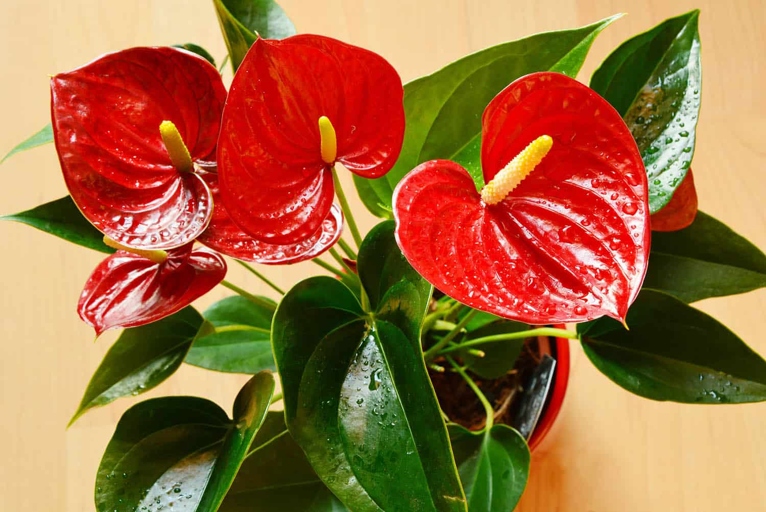
Be sure to drainage holes in the bottom of your pot and never let your anthurium sit in water. Overwatering is the most common cause of problems with anthuriums. While anthuriums do need a lot of water, they don’t like to be waterlogged. Allow the soil to dry out slightly between waterings.
Anthuriums like to be misted with water occasionally, which will help to increase the humidity around the plant. If you live in a dry climate, you may need to water your anthurium more often than someone who lives in a more humid climate.
With a little bit of care, they will thrive and bloom for many years to come. Anthuriums are beautiful plants that make a great addition to any home.
Factors to Consider When Watering Your Anthurium
When watering your anthurium, there are a few factors you need to take into account in order to ensure your plant is getting the hydration it needs. The type of pot you’re using will also affect how often you need to water your anthurium; a clay pot will dry out faster than a plastic one, for example. The size of your plant will dictate how much water it needs – a small plant will need less water than a large one.
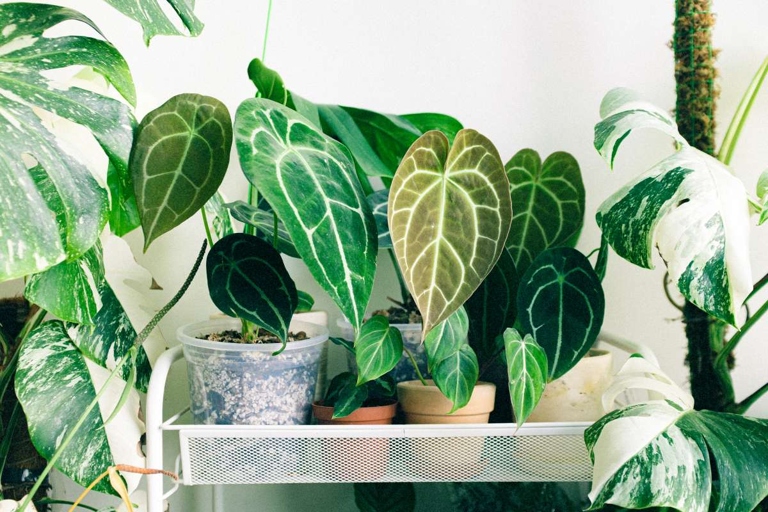
If it’s particularly hot and dry, your plant will need to be watered more often than if it’s cooler and more humid. The temperature and humidity of your home will also play a role in how often you need to water your anthurium. Finally, the type of soil you’re using will also affect how quickly it dries out; a well-draining soil will need to be watered more often than a dense, clay-based soil.
By taking all of these factors into account, you can ensure that your anthurium is getting the right amount of water – not too much, and not too little.
Seasons
However, this may vary depending on the season. When it comes to watering anthuriums, the general rule of thumb is to water them when the top inch of soil is dry. In the spring and summer, when the weather is warm and the plant is actively growing, you may need to water your anthurium more frequently. On the other hand, in the fall and winter, when the weather is cooler and the plant is dormant, you can water it less often.
Summer and Spring:
Summer and spring are the two busiest seasons for anthurium growers. During these seasons, the plants are actively growing and producing new leaves and flowers. They also need more water than during the other seasons.
Make sure to water the plants early in the day so that the leaves have time to dry before nightfall. This will help the plants develop strong roots and prevent them from getting stressed during the hot weather. The best way to water anthuriums during the summer and spring is to give them a good soaking once a week.
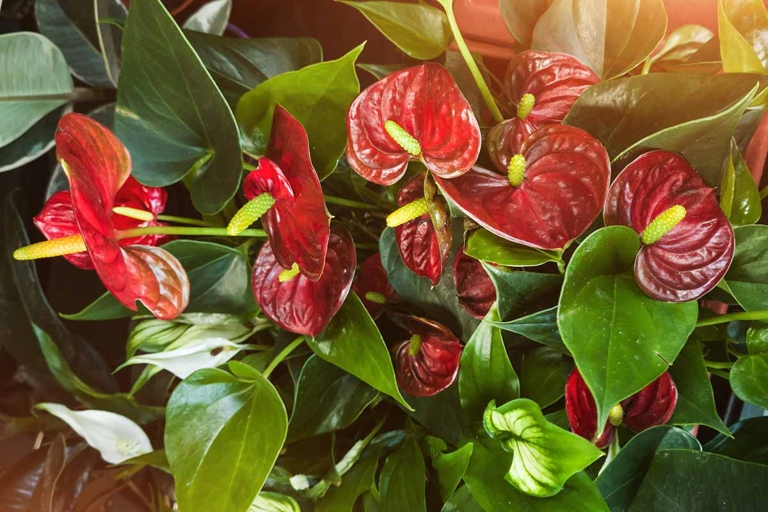
Be sure to check the soil before watering to make sure that it is dry. If you live in an area with high humidity, you may need to water your anthuriums more often. If the leaves start to droop, that is a sign that the plant needs more water. Overwatering can be just as harmful to anthuriums as underwatering.
Autumn and Winter:
This is because the weather is cooler and the days are shorter, which can cause the soil to dry out more quickly. When it comes to watering anthuriums, the general rule of thumb is to water them about once a week. If you notice that the leaves of your anthurium are starting to droop, then it’s time to give it a good drink. However, during the autumn and winter months, you may need to water them more frequently.
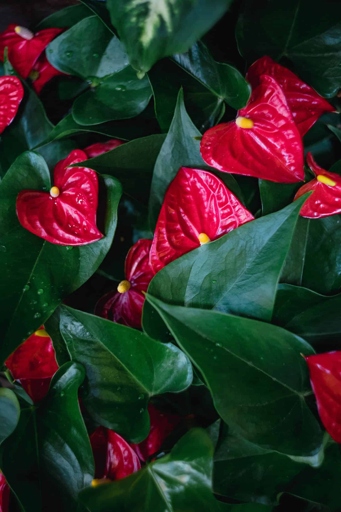
To avoid overwatering your anthurium, always check the soil before watering. After watering, be sure to empty out any water that collects in the saucer so that the plant doesn’t sit in water. If the soil is still moist, then wait a few more days before watering again. When you do water your anthurium, be sure to give it a good soaking so that the water reaches the roots. If the top inch or so of the soil is dry, then it’s time to water.
By following these simple watering tips, you can keep your anthurium healthy and thriving all autumn and winter long.
Flowering
The flowers are usually brightly colored and have a sweet smell. Flowering plants are a special type of plant that produces flowers. They attract bees and other insects, which help to pollinate the plant.
They should be watered every day, or at least every other day. Flowering plants need more water than other types of plants. If the soil is dry, the plant will not be able to produce flowers.
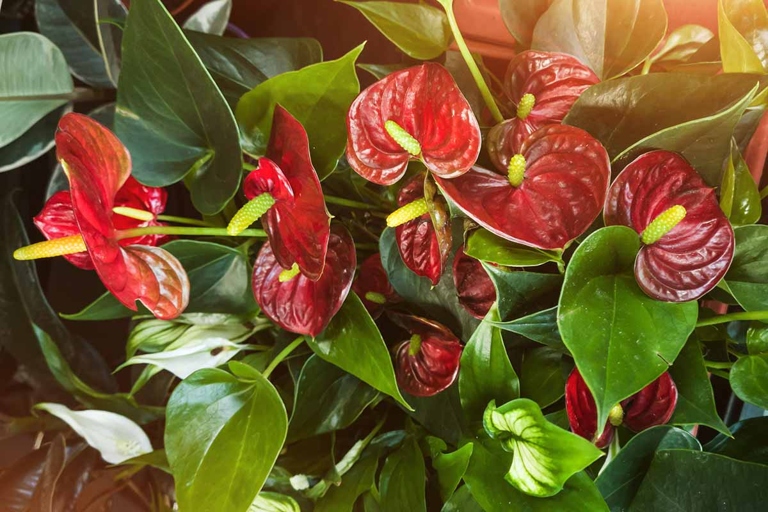
This will help the plant to get the nutrients it needs to produce flowers. If you want your flowering plant to produce a lot of flowers, you should fertilize it once a month.
Size of the Plant
A small plant will need less water than a large one, and so will a plant that is in a pot as opposed to one that is in the ground. When it comes to watering an anthurium, the size of the plant is an important factor to consider.
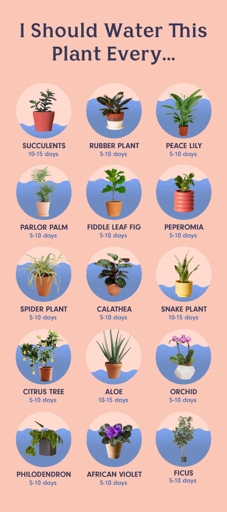
If you have a large anthurium, you will need to water it more frequently, perhaps every other day. If you have a small anthurium, you will only need to water it once a week or so.
Over-watering an anthurium can lead to root rot, which can be fatal to the plant. If you are unsure how much water your anthurium needs, it is best to err on the side of caution and water it less often rather than more.
Temperature
The ideal temperature for watering anthuriums is between 60-80 degrees Fahrenheit. If the temperature is too cold, the plant will take longer to dry out and may need less frequent watering. When it comes to watering anthuriums, temperature is an important factor to consider. If the temperature is too hot, the plant will dry out quickly and need more frequent watering.
Humidity
Anthuriums are tropical plants that thrive in humid environments. They are native to the rainforests of Central and South America, where they grow under the canopy of taller trees. In their natural habitat, anthuriums receive frequent showers of rainwater and are constantly surrounded by moist air.
The easiest way to do this is to group your plants together and mist them regularly with a spray bottle. To recreate these conditions in your home, it is important to maintain high humidity levels around your anthuriums. You can also set up a humidifier near your anthuriums to raise the ambient humidity level in the room.
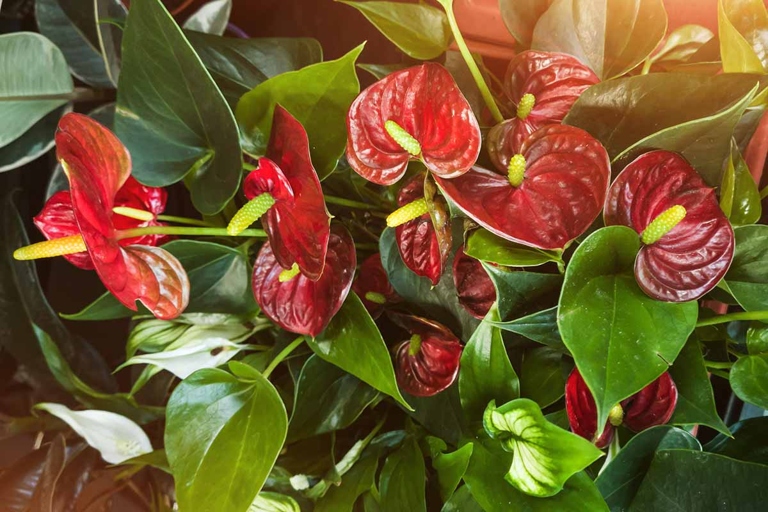
Otherwise, your anthuriums may suffer from dehydration, which can cause their leaves to turn brown and drop off. If you live in a dry climate or if your home tends to be on the drier side, paying attention to humidity levels is even more important.
Location of the Plant
If you can provide these conditions, your anthurium will be happy both indoors and out. When it comes to anthuriums, location is key. These tropical plants need bright, indirect sunlight to thrive. They also prefer high humidity and temperatures between 65 and 85 degrees Fahrenheit.
These plants are native to the tropics, so they are not used to cold temperatures. If you live in a colder climate, it is best to keep your anthurium indoors. When choosing a location for your anthurium, make sure it is away from any drafts.

When it comes to watering, anthuriums like to be kept moist but not soggy. Overwatering is one of the most common problems with these plants, so err on the side of caution. Be sure to check the soil before watering and only water when the top inch or so is dry.
Type of Pot
The type of pot you use can have an impact on how often you need to water your plant, as well as the overall health of the plant. When it comes to potting anthuriums, there are a few different options to choose from.
However, plastic pots can also retain heat, which can be detrimental to the plant in hot weather. One option is to use a plastic pot. Plastic pots are lightweight and easy to move, which is ideal if you need to water your plant more frequently.
Clay pots are heavier than plastic pots, so they are not as easy to move around. However, clay pots are more breathable, which helps to keep the roots of the plant cooler. Another option is to use a clay pot.
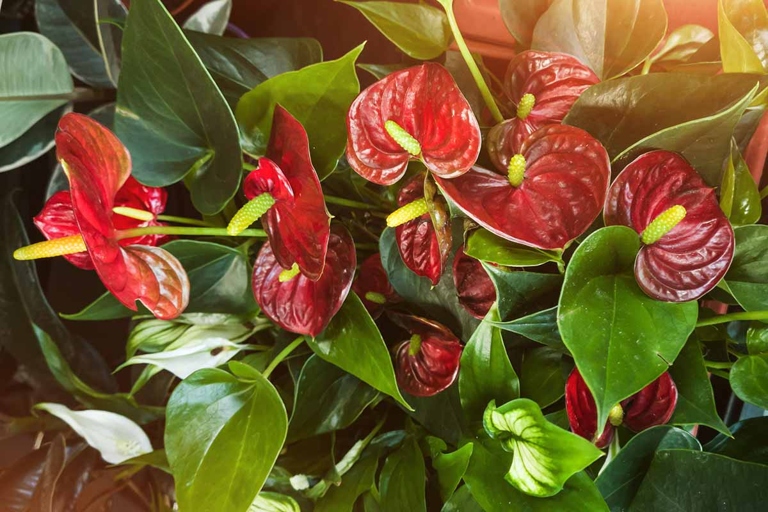
Finally, you can also use a basket or other type of container. Baskets provide good drainage and air circulation, which is important for anthuriums. However, baskets can also dry out quickly, so you will need to water your plant more frequently.
Overwatering is one of the most common problems with anthuriums, so it is important to make sure that you are not overwatering your plant. No matter which type of pot you choose, it is important to make sure that it has drainage holes to allow excess water to escape.
Size of Pot
When it comes to watering anthuriums, the size of the pot matters. If it feels dry, it’s time to water. A small pot will dry out more quickly than a large pot, so it will need to be watered more often. The best way to determine how often to water your anthurium is to feel the soil. A large pot will hold more moisture, so it will need to be watered less often. If it feels moist, it doesn’t need water.
Type of Potting Mix
First, the mix should be well-draining to avoid root rot. And finally, it should be chunky and airy, to help the roots breathe. When it comes to potting mix, there are a few things to keep in mind for anthuriums. Second, it should be slightly acidic, with a pH between 5.5 and 6.5.
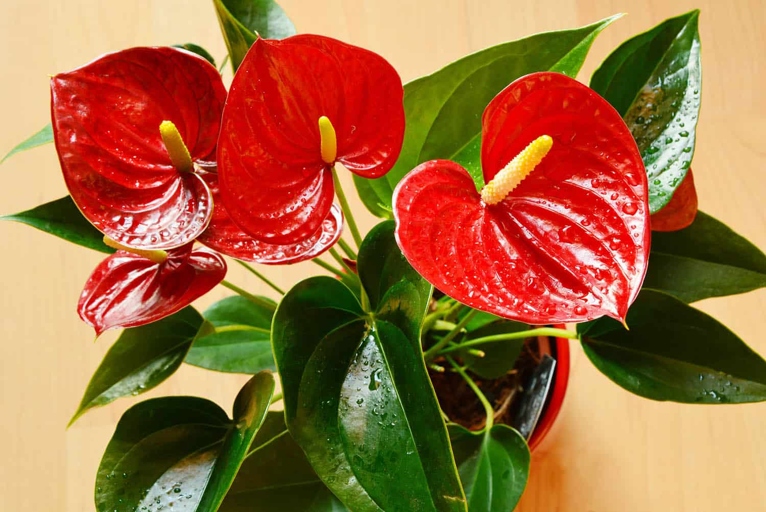
There are a few different types of potting mix that will work well for anthuriums. Another option is to use African violet potting mix, which is specifically designed for plants that like high humidity and acidic conditions. One is a mix of peat moss, perlite, and vermiculite. Whichever mix you choose, make sure to water it thoroughly before potting your anthurium, and then let it drain completely.
How To Spot an Under-watered Anthurium
The leaves will start to droop and look wilted, the stems will become thinner and less rigid, and the flowers will start to wilt. If you’re wondering how to tell if your anthurium is under-watered, there are a few tell-tale signs. If you see any of these signs, it’s time to give your anthurium a drink.
If you’re not sure how often to water, err on the side of too much rather than too little. Allow the potting mix to dry out somewhat in between waterings, but never let it become completely dry. To water your anthurium, simply give it a good soaking until water runs out of the drainage holes in the bottom of the pot.
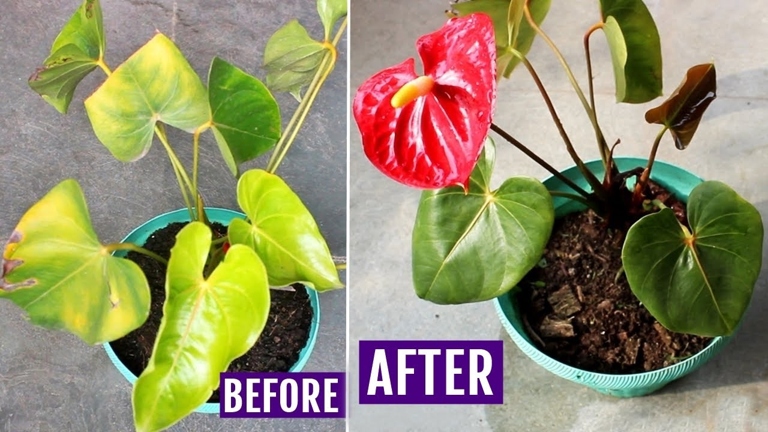
With a little care, you can keep your anthurium healthy and hydrated. Just be sure to keep an eye out for the signs of under-watering, and give your plant a drink when it needs it.
Signs of Underwatered Anthurium
Another sign of an underwatered anthurium is that the flower buds will start to drop off before they have a chance to bloom. The leaves will also start to turn yellow or brown if the plant is dehydrated. If you notice that your anthurium’s leaves are beginning to droop and wilt, it’s a sign that the plant is not getting enough water.
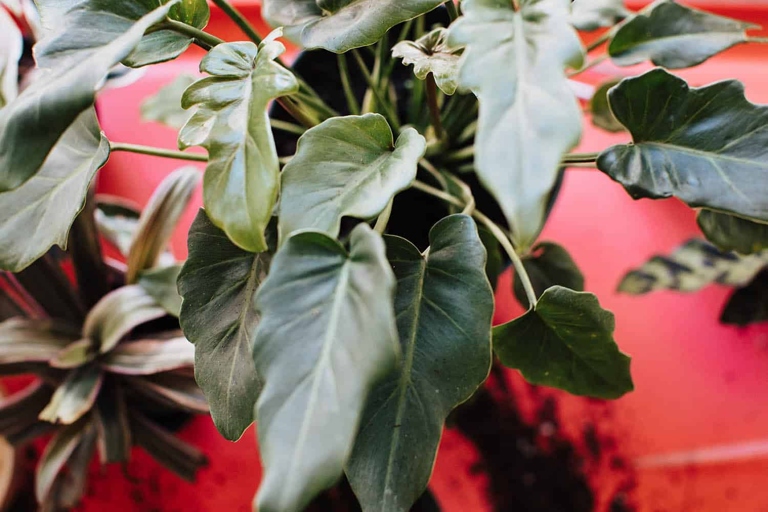
If you think your anthurium is not getting enough water, the best course of action is to give it a good soaking. Water the plant until the soil is saturated and the water begins to drain out of the bottom of the pot. Let the plant drain for a few minutes before putting it back in its place.
Signs Your Anthurium is Over-watered.
If you notice that your anthurium’s leaves are wilting or yellowing, it’s a sign that the plant is getting too much water. If you see any of these signs, it’s important to cut back on watering and let the plant dry out a bit. Over-watering can also cause the leaves to drop off the plant.
How to check your anthurium’s water level.
Water the plant until water runs out of the drainage holes, then empty the drip tray. If the mix feels dry, it’s time to water. Anthuriums like to dry out a bit between waterings, so don’t be alarmed if the mix feels a little dry to the touch. To check your anthurium’s water level, stick your finger into the potting mix up to the second knuckle.
Best Ways to Water your Anthurium
Here are some tips on the best ways to water your anthurium: One of the most important aspects of taking care of an anthurium is watering it properly.
-Water your anthurium once a week, making sure to evenly moisten the soil.
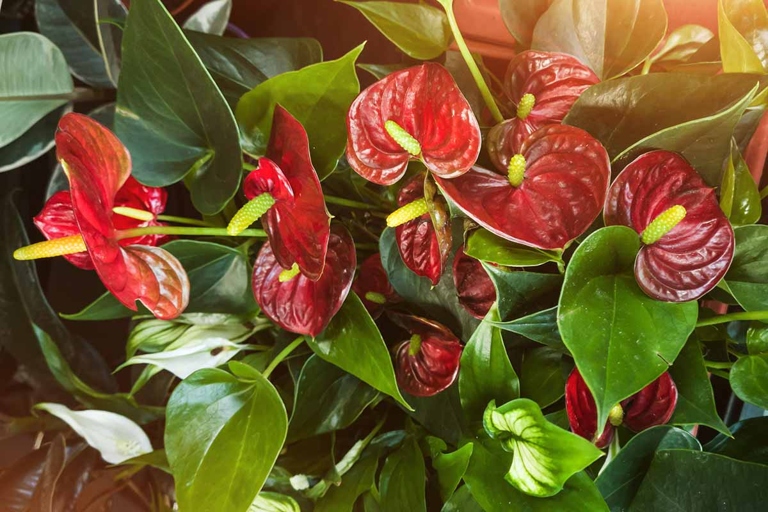
-During the hottest months, you may need to water your anthurium twice a week.
-Make sure the soil is always moist, but never soggy.
-If the leaves of your anthurium start to droop, that means it needs more water.
By following these tips, you can ensure that your anthurium stays healthy and happy.
Watering from Above
Watering from below can cause the plant to rot. This allows the water to evenly distribute itself throughout the plant. When watering anthuriums, it is best to do so from above.
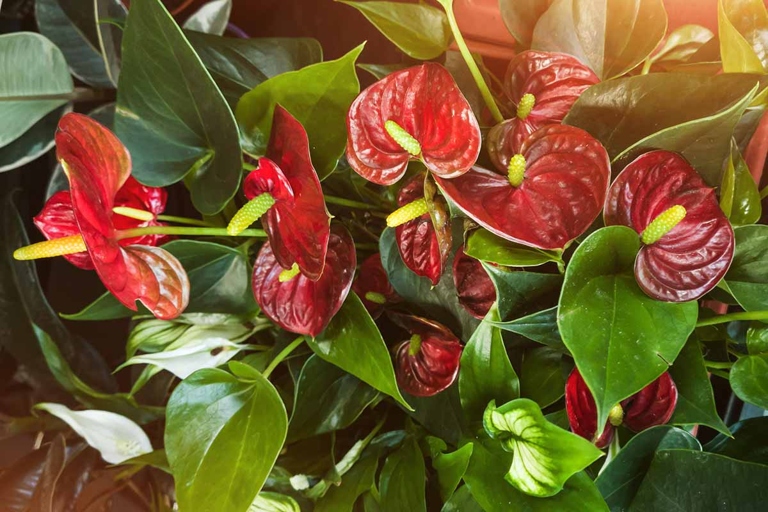
They should be watered about once a week, or when the soil feels dry to the touch. It is important to water anthuriums regularly. Over-watering can cause the plant to rot, so be sure to only water when necessary.
They will likely need to be watered twice a week during the summer months. If you live in a hot climate, you may need to water your anthuriums more often.
Hot or cold water can shock the plant and cause damage. When watering anthuriums, be sure to use lukewarm water.
Watering From Below
The answer depends on a few factors, including the type of anthurium, the potting mix, the size of the pot, and the climate. If you’re growing anthuriums, you may be wondering how often to water them.
In general, it’s best to water anthuriums from below. This allows the roots to take up water more efficiently, and it helps prevent the leaves from getting too wet, which can lead to fungal diseases.
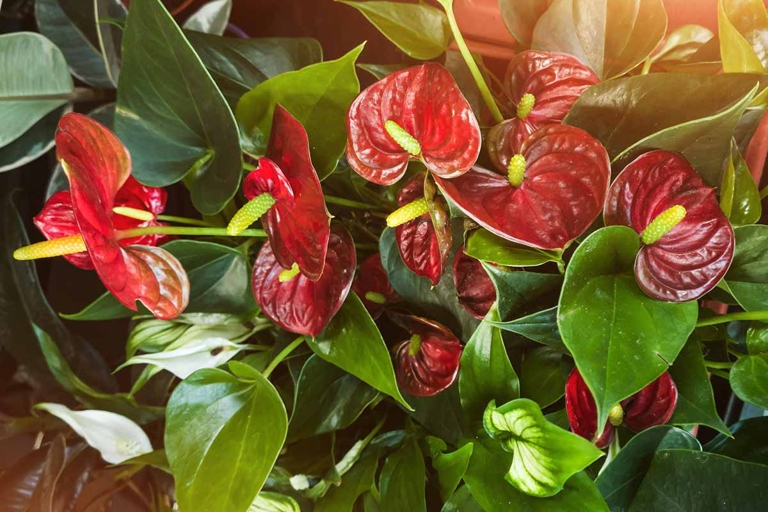
To water from below, simply place the pot in a sink or tray of water and let the roots soak up water for about 15 minutes. Then, drain the pot and allow it to dry out before watering again.
However, during the hottest months of the year, you may need to water more frequently. And, during the winter, you may need to water less often. In most cases, you’ll need to water anthuriums every 7-10 days.
If you’re not sure how often to water your anthuriums, it’s best to err on the side of too little water rather than too much. Over-watering is one of the most common mistakes made with these beautiful plants.
Self Watering Pots
Self watering pots are a great way to make sure your anthuriums always have enough water. Here are a few tips on how to use them:
Fill the pot with water and let it soak for a few hours before planting your anthurium. 1.
Make sure the pot has a drainage hole so that the excess water can drain out. 2.
3. Place the pot in a location where it will get plenty of indirect sunlight.
4. Check the water level in the pot every few days and add more if needed.
When the soil in the pot feels dry to the touch, it’s time to water your anthurium. 5.
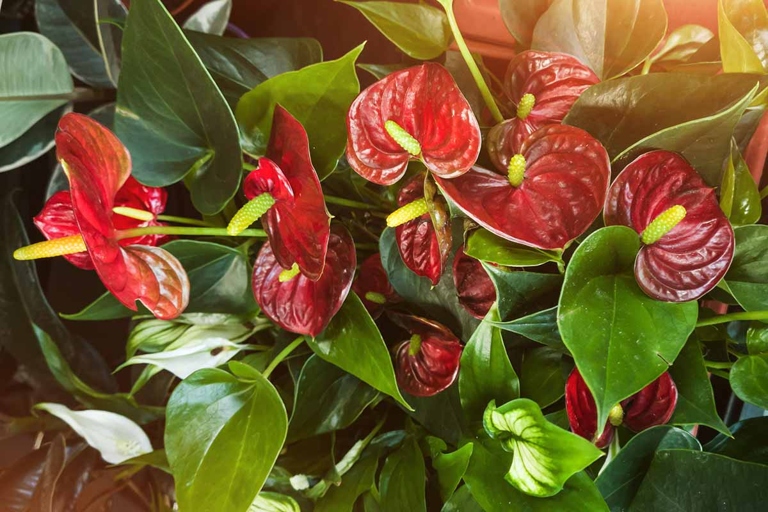
Self watering pots are a great way to make sure your anthuriums always have enough water. By following the tips above, you can be sure that your anthurium will always have the water it needs to stay healthy and happy.
The Golden Rules of Watering your Anthurium
First and foremost, always check the soil before watering. Secondly, be sure to use room temperature water, as cold water can shock the plant. If the soil is dry to the touch, it’s time to water. Finally, water the plant at the base, avoiding the leaves, as too much water can cause leaf rot. When it comes to watering your anthurium, there are a few golden rules to follow.
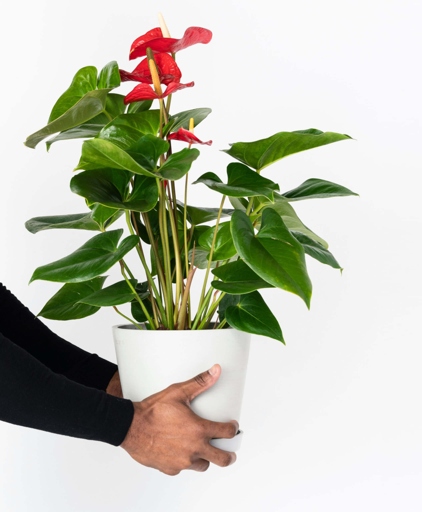
If you follow these simple rules, you’ll be sure to keep your anthurium healthy and happy.
Watering Anthuriums After Re-Potting
After you’ve re-potted your anthurium, you’ll need to water it. How often you water it will depend on the size of the pot, the type of potting mix, and the weather.
The type of potting mix you’re using will also affect how often you need to water your anthurium. A potting mix that drains well will need to be watered more often than a potting mix that doesn’t drain well. If you’re using a small pot, you’ll need to water your anthurium more often than if you’re using a large pot.
If it’s hot and dry, you’ll need to water it more often than if it’s cool and wet. The weather will also affect how often you need to water your anthurium.
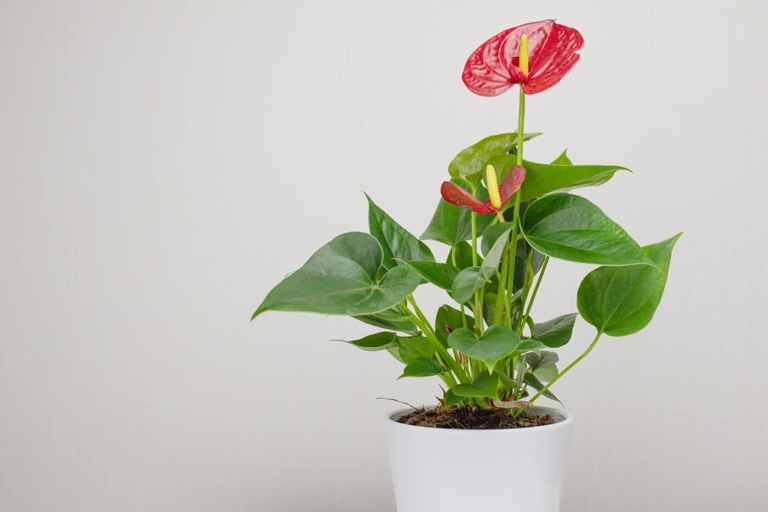
It is important to water your anthuriums after re-potting them to help them adjust to their new environment.
If the potting mix is dry, you may need to water it more often. If the weather is hot and dry, you may need to water it more often. In general, you should water your anthurium once a week.
Frequently Asked Questions
1. How often should I water my anthuriums?
Ideally, you should water your anthuriums once a week, giving them a good soaking. However, during hot weather or if the plant is growing rapidly, you may need to water them more frequently.
2. How do I know if my anthurium needs watering?
The best way to tell if your anthurium needs watering is to check the soil. If the top inch or so of soil is dry, it’s time to water.
3. What happens if I water my anthurium too often?
If you water your anthurium too often, the roots will become waterlogged and the plant will start to decline. You may also see yellowing leaves or leaf drop.
4. What happens if I don’t water my anthurium enough?
If you don’t water your anthurium enough, the leaves will start to wilt and the plant will become stunted.
5. Can I use a spray bottle to water my anthurium?
Yes, you can use a spray bottle to water your anthurium, but be sure to use distilled or filtered water, as tap water can contain minerals that can build up on the leaves.
Final thoughts
If you water your anthuriums too little, the leaves will begin to droop and the plant will wilt. If you water them too much, the leaves will yellow and the plant will begin to rot. The best way to water your anthuriums is to feel the soil around the plant. If the soil is dry, water the plant. If the soil is moist, do not water the plant.
